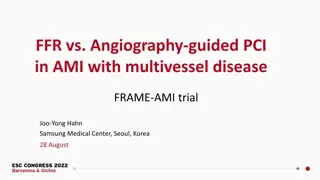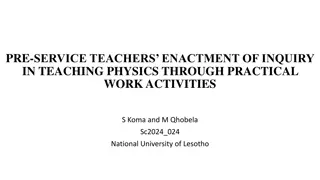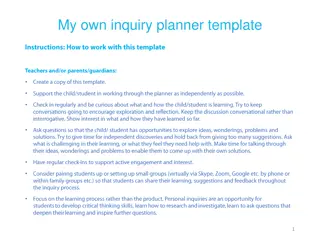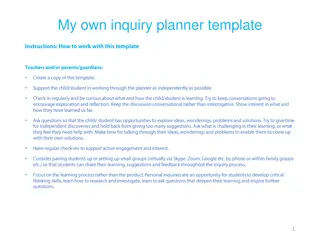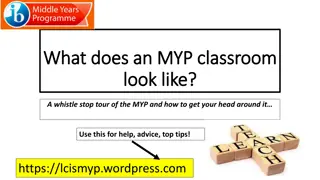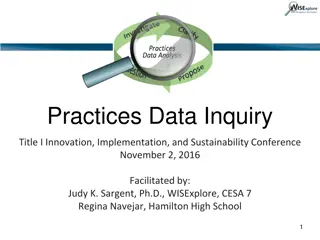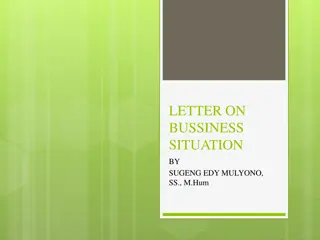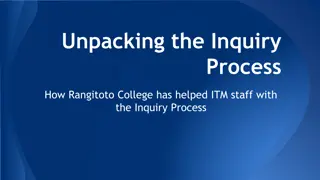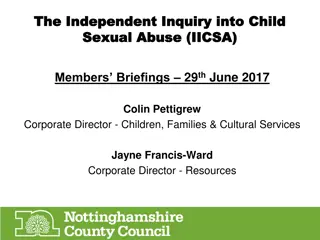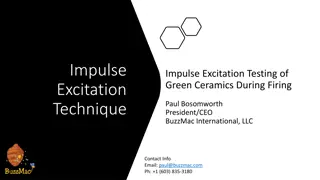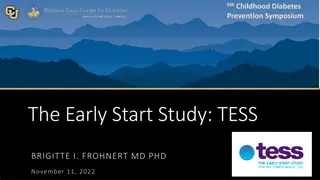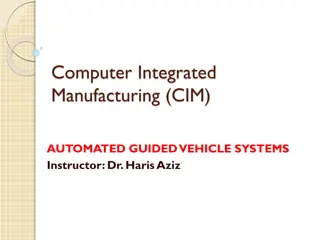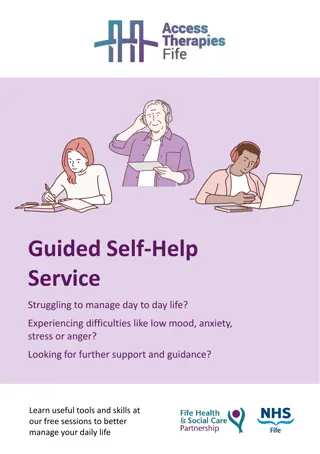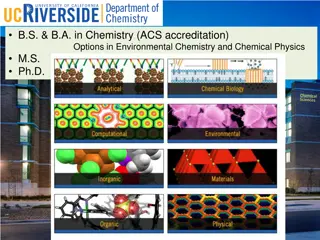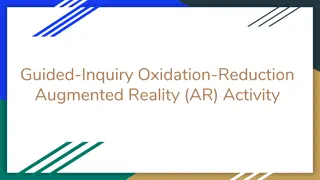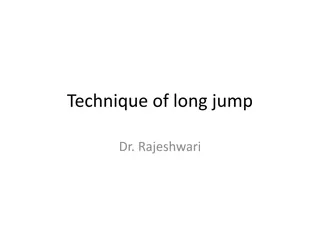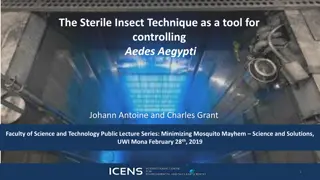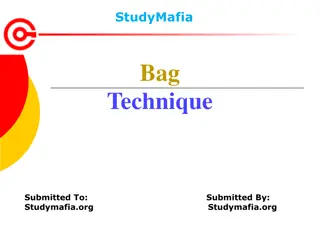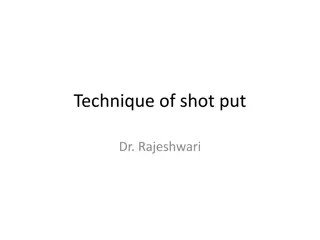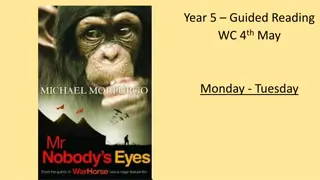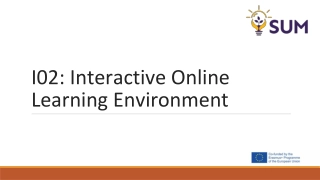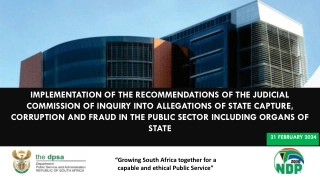Interactive Guided Inquiry Technique in Chemistry Class
Explore how the Guided Inquiry technique is used in a Chemistry class to help students understand nuclear fission and fusion concepts through guided discussions and individual observations, ultimately reaching a class consensus on the topic.
Download Presentation

Please find below an Image/Link to download the presentation.
The content on the website is provided AS IS for your information and personal use only. It may not be sold, licensed, or shared on other websites without obtaining consent from the author. Download presentation by click this link. If you encounter any issues during the download, it is possible that the publisher has removed the file from their server.
E N D
Presentation Transcript
Guided Inquiry Guided Inquiry is a technique in which the teacher asks questions guide student understanding of a topic, but never directly gives them the answer to what they are looking for.
Example of use in a Chemistry Class Part 1 - Teacher Instructions: Background: Do not introduce terms nuclear fission and fusion prior to starting. Students are learning about nuclear chemistry, nuclear fission and nuclear fusion. Project the image on the next slide. Objective: Ask students to individually identify the similarities and differences between the to images and write a brief description of what is happening in each. Students will be able to define, in their own terms, nuclear fission vs nuclear fusion. Students will be able to identify nuclear fission vs nuclear fusion reactions. This can be done mentally, paper, JamBoard, but Pear Deck works really well, especially if virtual.
Students: on your own, take 3 minutes to record any observations you have about this image. This can include similarities, differences and a description of what you think is happening. Image 1 Image 2
Part 2 - Teacher instructions After students have had time to record their individual observations, put them in groups of 2- 4 and guide a discussion. Tips and tricks: Roam the room and listen to group discussions. If you hear something good, ask that group member to explain it further to the group. If you hear groups struggling, pose directing questions to guide them Ex: How many particles does Image 1 start with vs Image 2? Groups can put their work on paper, JamBoard, Post-it notes oe a PearDeck Instruct groups to: 1. Have each individual share their observations Create a list of common observations for each image Come to a consensus on what is happening in each image. Write a 1-2 sentence describing each image. 2. 3. 4.
Part 3 - Teacher Instructions Begin a whole class discussion, have each group nominate a spokesperson to share out for them (this role can also be assigned). Next collect the descriptions. It might be helpful to have the images projected still and put the descriptions on the image. Begin with collecting group responds for similarities and differences between the image. You might only need 1-2 groups to share, them ask other groups if they think anything needs to be added or changed. There should be a lot of overlap If something is really good, you can circle it and say something like oh, I really like this If something is really wrong, just say something like I m not too sure about that Coming to a class consensus is key and this is where the teacher can continue to ask questions, if something is lacking from the descriptions. The teacher can record these on a whiteboard, JamBoard, Screen or have the spokesperson come up and present and write them down.
Part 4 - Teacher Instructions Dependant on time or skill level, the class can come up with a name for these processes happening in the images. Now have the groups discussion which they think is which and come to a consensus. Share out or take a vote to see how each group decided to name the images. If the class has a developed vocabulary, you can start asking for synonyms for making/breaking. Hoping that fusion might be mentioned (fusion comes up time to time in most classes, fission rarely gets suggested). If there is not a whole class consensus, have groups present their reasoning and try to sway the other groups. Eventually, you will get a class consensus or have to step in and confirm the correct names. Most of the time or in class that mave have ELL, the teacher can give them the two names These are students generated descriptions/definition of a complex idea, because the student come up with the explanation, they have created their own original content knowledge. One of these processes is called Nuclear Fission and the other is Nuclear Fusion



